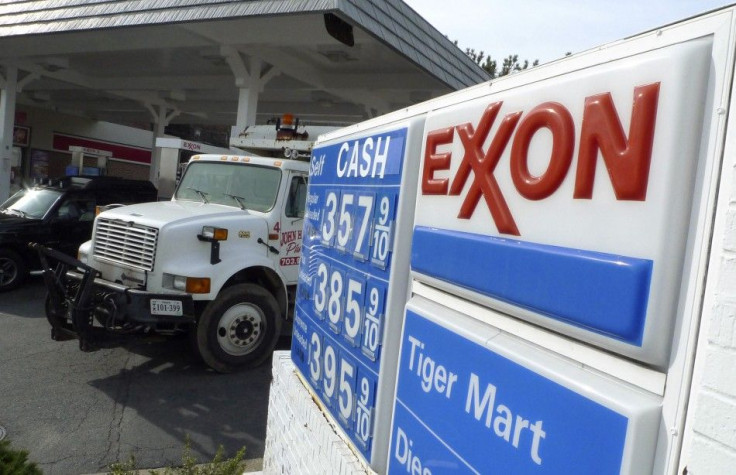$5 Gas is High, But the Price is Much Higher in Many Foreign Countries
A Worldwide Comparison of Gas Prices

Gas prices have risen to above $4 per gallon in many parts of the United States and could rise to $5 per gallon by the summer. The rising prices have sent politicians on both sides of the spectrum into a finger-pointing spree, with Republicans candidates quick to blame President Obama, who in turn is saying that Republicans want the gas price to rise even higher.
Equally flustered are economists, who are debating the looming impact the gas price will have on consumer spending, consumer confidence and the housing market.
The price has already risen by 44 cents per gallon since December, and the national average was $3.72 as of Thursday -- 40 cents higher than a year ago, 15 cents higher than the price just nine days ago and 28 cents away from matching the United States' all-time high of $4.05 (on a national average basis).
While the figure is staggeringly steep -- as is the projected $5-per-gallon price tag -- compared to other countries, it's actually a rather low.
The price of oil per barrel is relatively consistent around the world, but the price of gas per gallon can differ dramatically, even in neighboring countries. For example, in Russia, Thailand and Pakistan, the price per gallon is close to what it is in the United States, while in Argentina, Canada, Cuba, India and South Africa, it's about $0.50 to $1 higher. But in Singapore, people were paying more than $6 per gallon in January, and in Turkey, the prices have reached over $9.50.
At the pump, one is not just paying for a gallon of gasoline. According to the U.S. Energy Information Administration, about 80 percent of the actual cost that each American consumer pays accounts for the crude oil and refining, while 10 percent of the cost covers distribution and marketing and the remaining 10 percent is taxes.
(Compare that to a product like beer: only a fraction of the total cost per bottle -- about 3.0 percent -- covers the ingredients and production, while the rest of the price is for packaging, distribution and marketing.)
Prices Around the World
Compared to Europeans, Americans pay a small sum on gasoline. The price per gallon in some European nations is often double or triple the amount it is across the Atlantic.
Most of the drastic price difference is due to taxes. European governments impose a significantly higher at-the-pump tax, including a VAT -- or value add tax -- in many places. Where as in the United States, about 10 percent of the cost of oil comes from taxes, it's closer to 50 percent in most European states.
Gas prices have fallen in Europe in the past six months (and risen between January and February), but the strength of the euro and pound sterling compared to the dollar have kept the prices high.
The below chart shows the 10 highest per gallon prices in Europe, as of last week.
*source EEP. Graph by IBTimes
In Africa, the prices are far more inconsistent than in Europe, and vary wildly by country.
Eritrea has some of the highest oil prices in the world. As of January, gas in the Horn of Africa nation costs a staggering $9.58 per gallon, according to AIRINC. That's almost twice as much as in Kenya, where gas is $5.02 per gallon. Notably, Kenya produces its own oil, while none is produced in Eritrea.
Fuel prices in Nigeria have varied drastically in the past few months, thanks almost entirely to government policy. Nigeria produces two million barrels a day and oil exports account for 80 percent of the county's economy. However, because of poor infrastructure and government corruption, Nigeria cannot refine its own oil and is forced to important crude back into the country.
The government, which has become immensely wealthy since the oil boom of the 1970s, covers this cost for the Nigerian people through a subsidy. In the past, this subsidy kept the price of gas around $1.50, significant since most of the country lives on less than $1 per day.
However, President Goodluck Jonathan kept the subsidy out of the 2012 budget, instantly tripling the price of gas in many parts of the country. After protests, strikes and riots erupted across the country, the government partially reinstated the subsidy and the current price of fuel is $2.27 per gallon -- significantly less than in the United States. However, while about 6.7 percent of Americans live in extreme poverty, about 70 percent of Nigerians do.
High Exports, Low Costs
Looking at Venezuela, it's clear that the cost of importing is significant. Venezuela is a leader in nearly every oil production category: it has the largest oil reserves of any nation (297 billion barrels proven), is a top 10 producer and a top 15 exporter.
But the price is dropped significantly through a government oil subsidy, which has made gas cheaper than water. As of January, the price per gallon in Caracas was just $0.06.
Many of the world's top oil producing nations -- which always have extremely wealthy governments -- also have subsidies. In Saudi Arabia, the price per gallon is $0.45, in Kuwait it's $.088, in the United Arab Emirates gasoline costs $1.77, and in Iran people pay $2.43 per gallon.
Related Article: Why the GOP Wants You to Pay Higher Prices at the Pump
© Copyright IBTimes 2024. All rights reserved.





















